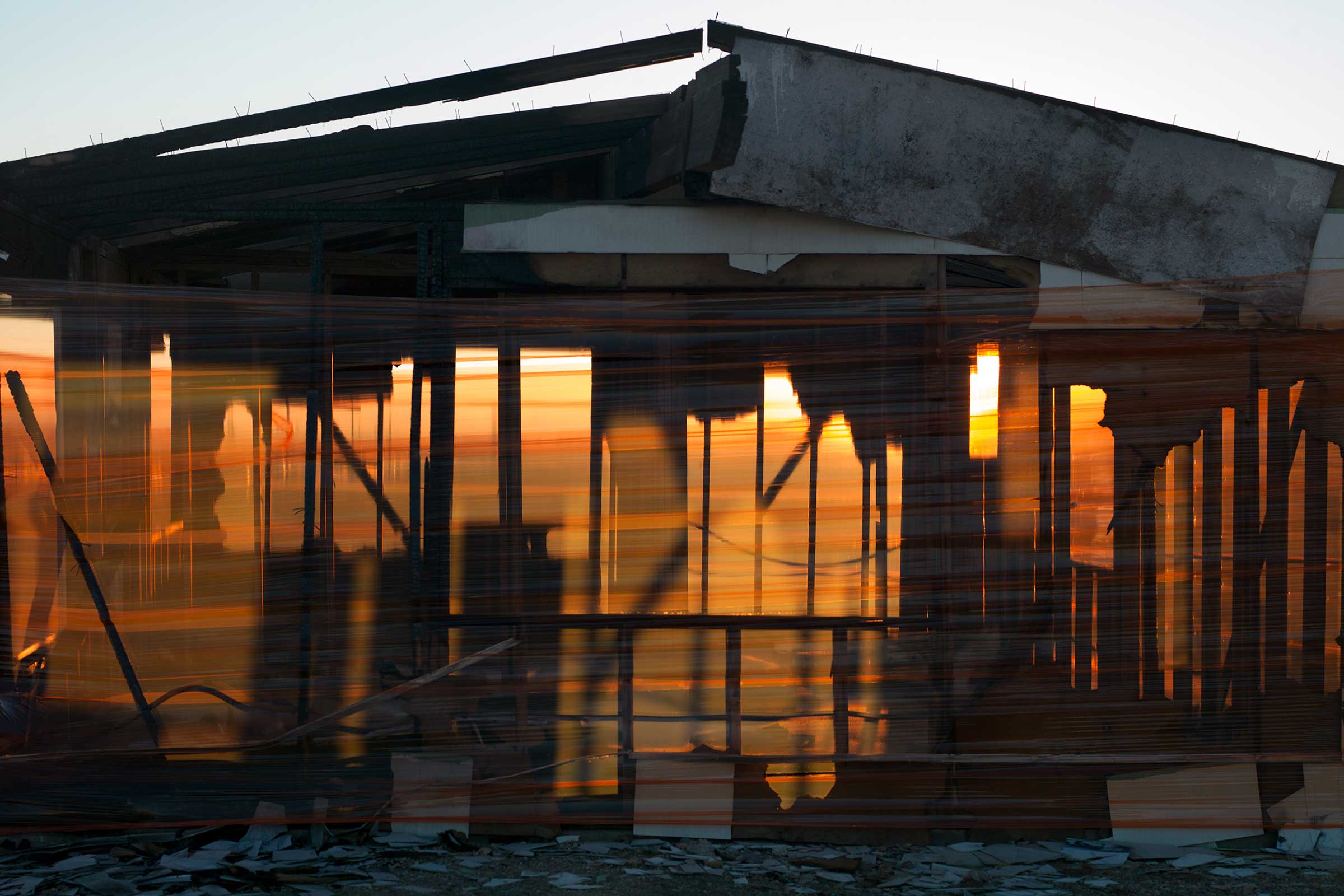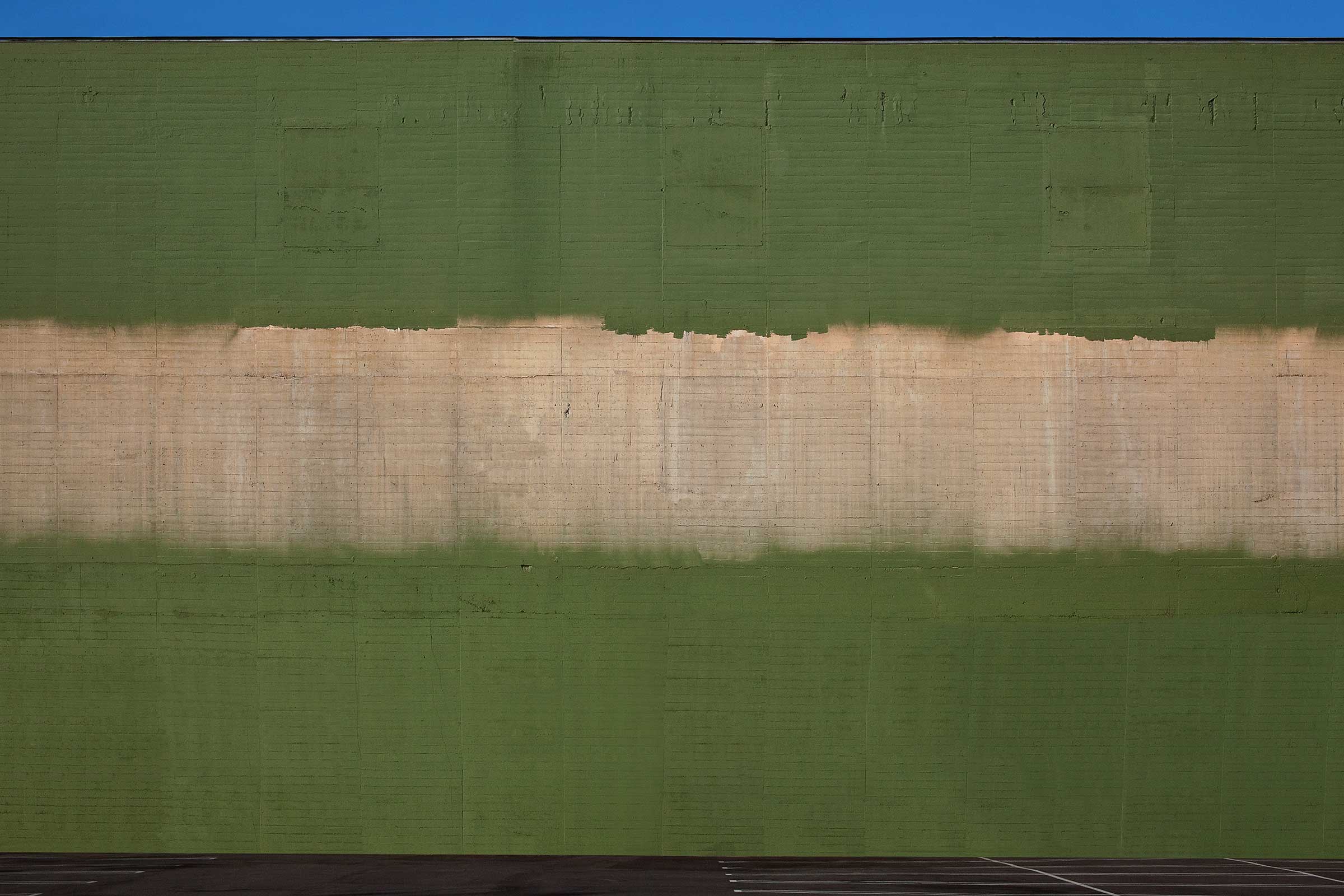Wandering Sentimentalist

Korean photographer Kim Woo Young talks about his path to becoming an artist and why he chooses an analogue approach
Kelbaker Road, 121cm x 156cm, Archival Pigment Print, 2017
Kim wrapped this dilapidated house in orange tinted wrapping to give a sense of hope to the abandoned structure.
Kim Woo Young is a South Korean artist who is based out of Seoul and Los Angeles. His photography art has been widely exhibited in New York, Los Angeles, Japan and Korea, and is also included in collections at several major art museums in Seoul. Here, he speaks with Irene Lam about his background and the inspiration and intentions that inform his artistic practice.
Irene Lam: Can you share a specific memory or talk about what it was like growing up in Korea in the 60s/70s?
Kim Woo Young: I was born and raised in Busan, a port city located in South Korea, in the 1960s. At that time, Busan wasn’t such an easy city to live in as it was undergoing a lot of political, social and economic changes, but my memories of growing up there as a young boy mostly revolve around nature — from the smell of the sea to the ambient sights and sounds of the countryside. That all changed when I had to move to Seoul for middle and high school. Seoul was so different, and was undergoing serious industrialisation and political upheaval. Personally, there was a sense of displacement for me as I was trying to figure out how my future would unfold. I remember spending many days and nights wandering along the Han River Bridge feeling sentimental, realising that I needed to find an outlet to express myself creatively and artistically. Before entering university, I was drawn to artists, musicians and photographers and was deeply influenced by their stories and experiences.
Bagley Avenue, 122cm x 122cm, Archival Pigment Print, 2017
In the eyes of the artist, the exterior of this empty building in an isolated town represents how industrialisation can suddenly make things obsolete, with humans as the culprits of this kind of decimation.
What drew you into the field of fine art photography?
I first studied Urban Design and Industrial Design at Hongik University in Seoul from 1979 to 1986. My inner circle of friends were all artists at that time so I was quite immersed within the arts scene and tried to learn as much as I could about experimental movies, music and art. However, I still felt a need to find the right channel for myself. Being an urban design student, I would take a lot of photos of buildings and streets for environmental projects, and that had a big influence on my interest in photography. Another reason is that with photography, you don’t need to rely on others to create your images. So, that’s the reason why after my studies in Seoul I decided to move to New York to study photography at the School of Visual Arts. And from then, I began my journey in discovering the profound elements of photography as an artistic medium.
E. 6th Street, 170cm x 140cm, Archival Pigment Print, 2017
This image is perhaps the most representative of Kim Woo Young’s works. The colour covering the wall surface and lines connecting the street are the focus of an unexpected aesthetic consequence that empowers his photographs.
Can you share some thoughts about your work?
I’d like to think of my works as not so much an experiment attaching a concrete message but rather an attempt to show the possibilities for a new interpretation of a city or nature scene by providing a direct visual experience. The camera simply acts as a tool to capture a place of meaning. I always like to shoot my subjects in natural light, and preferably in the early morning hours so that there are no deliberate shadows. In fact, I find more depth in an ‘analogue perspective’. In today’s digital age, some might say that I am missing the point, but I feel that in a world so crowded by digital, we sometimes need a break from it all. My images always try to stay unaffected.
You have dedicated and committed most of your life to photography, encompassing all its communicable aspects from commercial, documentary and aesthetic. How do you see the next stage of career unfolding?
After having established myself as a photographer in Korea and the US, I will continue to develop myself and hope that my works can be accessible to viewers in more countries around the world. I have been travelling to Tibet since 2010 and my next project is to share those images in a published book. I want to bring more of a global perspective to my work. I will always have a bit of sentimentalism in me but now I know where I should be and where my next steps will take me.
As told to / Irene Lam
Images / Courtesy of Kim Woo Young
Olvera Street, 125cm x 188cm, Archival Pigment Print, 2017
One major characteristic in Kim’s photographs is the colourful radiance and flow of lines on the surface of buildings and street walls.
CGWC image, 125cm x 188cm, Archival Pigment Print, 2017
Rather than intervening or excessively manipulating photographs, Kim focuses on capturing the unique characteristics of buildings in their original environment.











